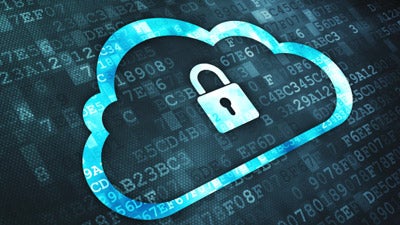
Cloud networks are the wave of the future. The ability to access your business assets anywhere is attractive to many companies — especially those with a remote team. However, figuring out how to protect digital assets requires cunning and foresight.
The cloud services market is a $266.4 billion industry and growing yearly. As with anything online, though, cybercriminals try to find ways to access personal information or take systems down. Protecting your company’s assets is a vital step in ensuring your customer and business data stays safe.
Cloud security is often a concern of small-business owners. Some may even shy away from cloud computing due to fears of exposing trade secrets or customer lists. However, you can take steps to protect your business’s assets while reaping the benefits.
1. Choose the Right Provider
Your first step should involve choosing your cloud provider wisely. What steps do they take to ensure secure digital assets? Most cloud-based hosting companies have the best security software imaginable. Because they represent numerous clients, they can invest more in top-notch protection.
Ask how they back up information. What happens if a hack does occur? Find out how frequently they update their security systems and what they do to sense a potential threat.
2. Match Specialties
Different cloud providers specialize in working with particular industries. A company that already has clients in your sector better understands your unique security needs. Cloud migration can take endless hours of moving databases to a new setup. It helps to know which system you want and why.
Find a provider willing to move information over for you in a secure environment so you start the process with less risk.
3. Secure Your Wi-Fi
It doesn’t matter who your provider is if the machines used to access data are compromised. Make sure company Wi-Fi is secure and people can’t log in and watch what your employees are doing.
Your IT department should pay particular attention to employees working off-premises. Make sure their networks require passwords and are encrypted. Productivity tracking software might seem like a good idea on the surface but may open users up to vulnerabilities by taking screenshots as they type in usernames and passwords.
4. Require Resets
Require your workers to reset their passwords for logging into the cloud every 60 days or so. Set up some rules around the types they can create, don’t allow repeated passwords and ask them to protect their current login information.
Although not as common as digital hacks, there have been occasions when someone works at a coffee shop and a nearby table notes their login and steals it to access a company website.
5. Test Your System
There was a surge in data breaches in 2021 — at least 17% higher than in 2020. Spend time testing your system for weaknesses. Can someone break in using an old password or the age-old hack of “admin?”
Hire someone skilled at hacking to try to break into your system and find weaknesses. Many cybersecurity firms offer this type of service to help businesses stop attacks before they occur.
What happens when an employee gets fired? Ideally, their account gets shut down in an instant. Otherwise, you open your brand up to vengeance attacks.
6. Train Employees
One of the top things you can do is train your employees in cybersecurity. Explain what phishing is and how they can avoid it. Set policies to never request password information in an email.
Spend time refreshing your staff about how to keep data secure every so often. They should be very careful when working in public locations.
7. Keep Backups
Even if the cloud computing company you use keeps regular backups, and most do, make sure you keep them as well. In the case of a severe cyberattack, your entire system, website and online presence may go down.
You can get back online fast and avoid revenue loss when you have a recent backup. However, it might take days to restore everything if you don’t. In a worst-case scenario, you may lose some data forever.
8. Keep Sensitive Data Offline
If your company has some truly sensitive data because you work with patients or the government, consider keeping some things off the internet. No matter how much software you install or how intense your security, there’s always a chance of hacking.
If something is extremely sensitive, you can code it and use that for your online entries or just take that information to your private servers. However, they must also be kept secure.
9. Encrypt at the File Level
Even if your cloud provider uses encryption, add another layer of protection by encrypting before you upload your files. You’ll need something your remote workers can access, but it’s crucial to take that one added step to prevent sensitive data leaks.
Use sharding to break up sections and store them in different locations to further protect documents. They may breach your network, but they aren’t likely to find the full information they need to steal private information. They’ll only have bits and pieces.
Business Cloud Security
The rate of cyberattacks has grown in the past year. More people are online, and businesses have to be remote-work-friendly. Cybercriminals are taking advantage of this, but you can stop them in their tracks by following a few of the tips mentioned above.
Think about the different ways you might open yourself up to an attack and take steps to stop it before it happens. Your cloud provider can help by putting protections in place, and you can ramp up security on your end, too.
2276 Views












